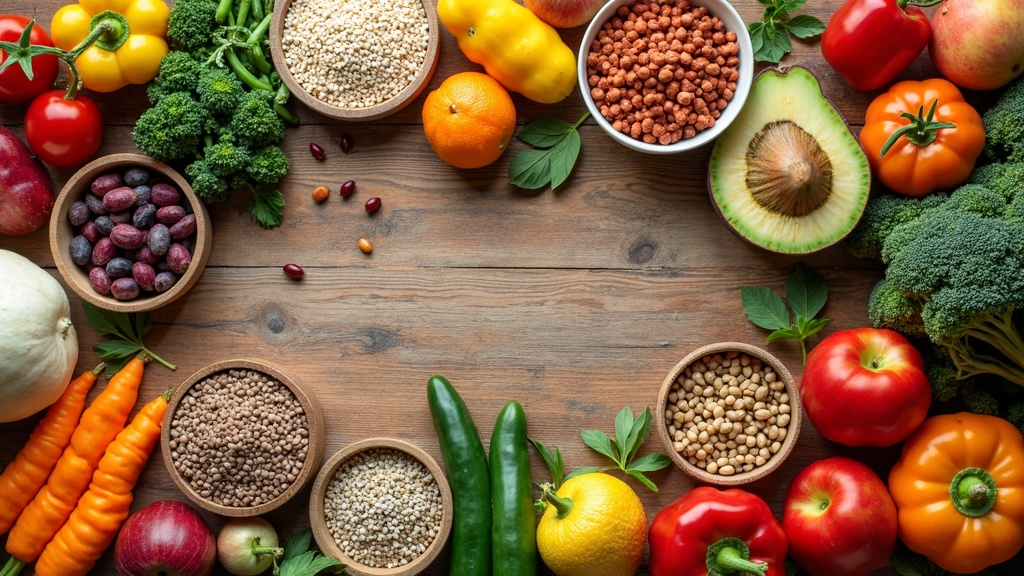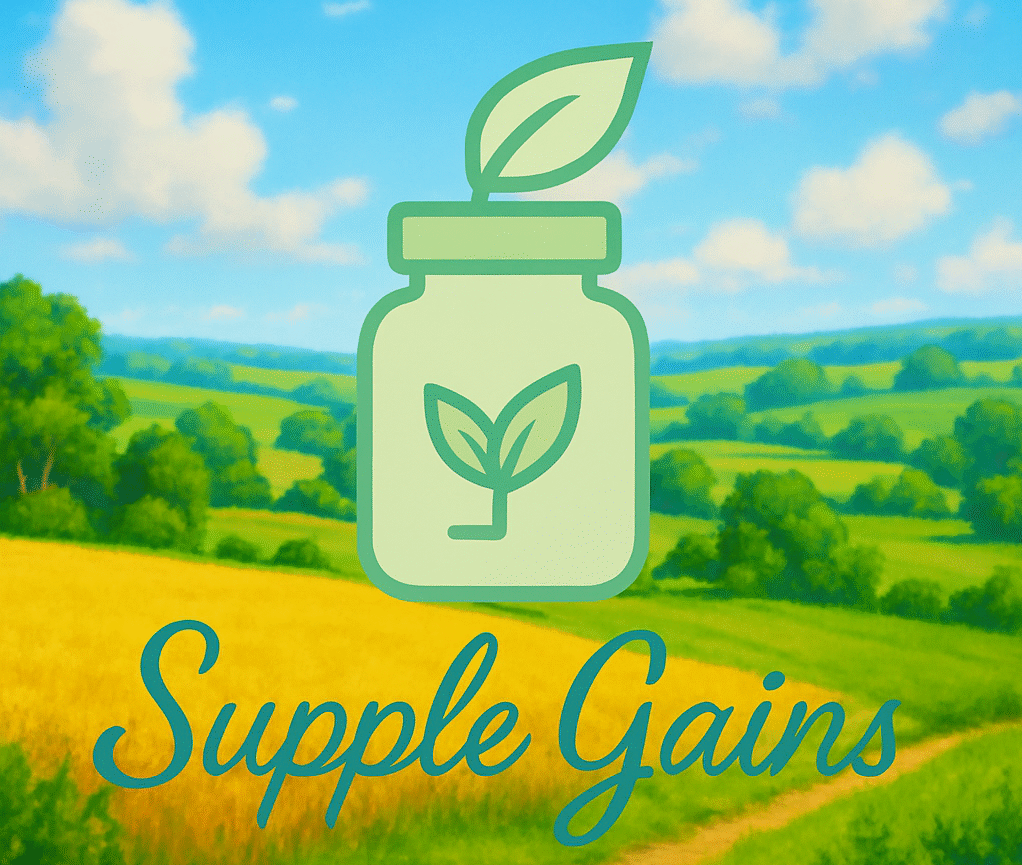Living with food allergies can feel overwhelming at times, and steering through a plantbased diet adds another layer that many people don’t expect.
Between label reading, meal planning, and making sure you get balanced nutrition, the details add up quickly.
I’ve been through the puzzle myself, juggling multiple food sensitivities and a plantbased lifestyle.
There are practical ways to keep things safe, enjoyable, and nutritionally solid, so you don’t have to sacrifice taste or variety.

Getting to Know PlantBased Food Allergies
Most people think of food allergies and imagine things like peanuts, shellfish, or dairy.
What can be surprising is that plantbased diets bring their own range of common allergens, including soy, gluten (wheat), tree nuts, peanuts, and even some legumes like lentils and chickpeas.
Learning what to watch for helps you choose the right substitutes and enjoy meals without worry.
Allergies basically mean your body’s immune system is reacting to a protein it finds in certain foods.
Symptoms can range from mild, like hives or a rash, to more serious cases such as anaphylaxis.
Sticking to a plantbased diet can be a great option for your overall health.
Still, it calls for attention to new sources of allergens and combinations you might not have thought about before.
PlantBased Staples That Can Cause Allergies
If you’re new to this way of eating, you’ll see certain ingredients popping up everywhere: tofu, tempeh, nuts, seeds, grains, and legumes.
These make plantbased diets practical and tasty, but they’re also among the most common triggers for allergic reactions.
Here are some details to keep in mind:
- Soy: Includes tofu, tempeh, soymilk, and many plantbased meat substitutes.
- Nuts: Such as almonds, cashews, walnuts, and hazelnuts. Nutbutters are also everywhere these days.
- Peanuts: Technically a legume, peanuts are in everything from sauces to snack bars.
- Gluten: Plantbased diets can be pretty grain heavy. Wheat, barley, and rye show up in breads, pasta, and mock meats.
- Legumes: Beans, lentils, chickpeas, and peas are classic sources of plantbased protein, but they can cause issues for some people.
- Sesame: More common in Middle Eastern and health foods, whether as seeds or tahini.
There are other, less common allergens, too, like mustard, sunflower seeds, or certain fruits and veggies.
Food allergy triggers can change over time or with exposure, so regular checkins with an allergist are a good idea.
Strategies for a PlantBased Diet With Food Allergies
You might feel stuck if it seems like every convenient staple is suddenly offlimits.
I’ve found that, while it takes some creativity and extra planning at first, there’s still a huge number of satisfying options out there if you focus on safe swaps and whole foods.
Here are some workable ideas:
- Find reliable substitutes: If you can’t eat soy, try chickpeabased products like aquafaba or lupini beans (if those are safe for you). Sunflowerseed butter can replace nutbutters, and oat or hempmilks can be used instead of soy or almond milk.
- Cook from scratch: Homemade meals help you control what’s in your food and lower crosscontamination risks. Batchcooking grains and beans (if those are safe for you) keeps meal prep pretty quick.
- Read every label: Packaged foods sometimes sneak in allergens you wouldn’t guess, usually as “natural flavors,” “vegetable protein,” or “spices.” Even stuff labeled “vegan” can contain nuts or soy.
- Rotate your proteins: Variety is key for staying nourished and lowering the risk of developing new food sensitivities. Safe whole grains, seeds, pulses (like lentils or split peas), and root veggies are worth exploring.
Swapping in new foods or changing up your protein sources can be exciting.
Millet, quinoa, buckwheat, and amaranth are great glutenfree grains.
If you’re clearing nuts, try toasted pumpkinseeds or hemphearts for crunch and flavor.
Nutritional Considerations: Getting Enough Protein, Iron, and More
A big question that always comes up is nutrition.
Missing out on big plantbased staples can affect your protein, healthy fats, iron, calcium, and vitamin B12 intake.
You don’t have to rely on fancy powders, but it does help to plan meals so that your needs are covered.
Here’s a quick breakdown of ways I keep nutrients in check without the usual suspects:
- Protein: Rotating beans (if you tolerate them), lentils, peas, and seeds (pumpkin, chia, hemp) keeps things interesting. Whole grains like quinoa and amaranth have a higher protein content, too.
- Iron: Leafy greens, blackstrap molasses, pumpkinseeds, and lentils all have iron. Try pairing these foods with vitamin C (like red pepper or citrus) to help boost absorption.
- Calcium: Fortified nondairy milks (such as oat or rice, if those are safe for you), tahini, and bok choy can help keep up calcium levels.
- Vitamin B12: Plantbased diets almost always need a supplement here, since B12 isn’t naturally found in plants. It’s super important to have your levels checked regularly and supplement as needed.
If you’re skipping soy, nuts, or gluten, the key is to look for plantbased options that rely on seeds, glutenfree grains, or pulses.
Keeping a running list of “safe swaps” on your phone or fridge can make weekly planning less of a brain drain, too.
Plus, consulting with a plantbased dietitian can help you track down new food ideas and keep you motivated about meeting your nutritional needs safely.
Common Tricky Spots and How to Steer Through Them
Even with careful planning, a few situations can be hard to manage.
Eating out, group meals, and holidays tend to be the toughest.
I’ve found that these strategies make a real difference:
- Eating Out: Check restaurant menus in advance and call ahead to ask about ingredients or possible crosscontamination. Many places are getting better at taking allergies seriously, and some will cook separate dishes if you flag your needs early.
- Potlucks and Parties: Bring a dish you know you can eat, and let your host know about your allergies in advance. It’s not a guarantee against mistakes, but it helps set expectations both ways.
- Travel: Pack a snack stash that works for you; bars, seedcrackers, roasted chickpeas, or dried fruit with pumpkinseeds—and scout grocery options near your destination.
Sometimes unexpected things come up.
Taking time to scan food labels or politely doublechecking with hosts can make these situations less stressful.
Carrying an allergy card or list of your “no” ingredients to share with chefs can be pretty handy, too.
Shopping and Reading Labels: What You Need to Know
Shopping for safe foods takes a bit more time at first, especially with processed or packaged items.
Regulations in many places require the top allergens to be listed clearly, but plantbased packaged foods aren’t always straightforward.
Here are a few things I look for when reading labels:
- Look for “may contain” warnings: These mean there’s a chance of crosscontact during manufacturing.
- Know alternate ingredient names: For example, hydrolyzed vegetable protein can be made from soy or wheat. Albumin can refer to egg or plantbased sources, so check labels carefully.
- Scan for unfamiliar ingredients: If something looks new, a quick search can save you some trouble.
Once you find a few brands you trust, you’re likely to stick with them.
If you have multiple allergies, join online groups or forums where people share safe finds and new products—they’re usually on top of changes and recalls.
These communities can make shopping less stressful by providing up-to-date tips and real experiences.
Cool Recipe Swaps and Inspiration
Coming up with new ideas can get tough, so swapping out allergyheavy ingredients with new plantbased flavors keeps things exciting.
A few of my favorites:
- Hummus without tahini: Try blending white beans with olive oil, lemon, and roasted garlic.
- Nutfree pesto: Use sunflowerseeds and nutritional yeast instead of pinenuts and parmesan, then toss with glutenfree pasta for a solid dinner.
- Oatmilk pancakes: Great for nut and soyfree diets. Top with stewed berries and pumpkinseeds.
- “Cheesy” sauces: Blend steamed cauliflower or butternut squash with nutritional yeast, garlic, and safe plantmilk.
Plenty of plantbased cookbooks focus on allergenfriendly ingredients, and there are blogs dedicated to both niche allergies and flexible vegan eating.
Don’t forget to check out social media platforms for trending recipes and support from people facing similar challenges.
Frequently Asked Questions
Here are questions I hear often from people managing both allergies and plantbased diets:
Q: How do I make sure I’m getting enough protein?
A:
Try rotating safe sources like seeds, pulses (lentils, chickpeas if you tolerate them), glutenfree grains (quinoa, millet), and experiment with allergyfriendly protein powders or bars.
Tracking a week’s meals can give you a clearer picture of your intake.
Q: What are some easy grabandgo snacks?
A:
Roasted chickpeas or lentils, seedbased bars, rice cakes with sunflowerbutter, or homemade trail mix with pumpkin and sunflowerseeds are all good options.
These are perfect when you’re busy or traveling.
Q: Do I need to take supplements?
A:
A vitamin B12 supplement helps fill a nutritional gap in plantbased diets.
Depending on which foods you avoid, a daily multi or extra vitamin D and omega3s from algae oil can help, too.
Always check with your doctor before starting new supplements.
Finding Support and Staying Motivated
Managing food allergies on a plantbased diet means you’re constantly learning and adjusting, which sometimes feels exhausting.
Connecting with other people on a similar path is super important.
Try online communities, allergy conscious cookbooks, or local meetups for some new ideas and support.
Dietitians focusing on plantbased or allergyfriendly nutrition can help you brainstorm new meal options and doublecheck your nutrition, too (here’s a directory worth checking out: EatRight.org).
Plantbased eating with food allergies is totally possible, and pretty delicious, if you stay collaborative, open to new foods, and flexible in your routine.
Taking it step by step helps you feel confident, wellfed, and supported, every single day.
With the right tricks and support, you’ll turn what looks like a challenge into a rewarding, varied eating experience that fits your needs and tastes.
